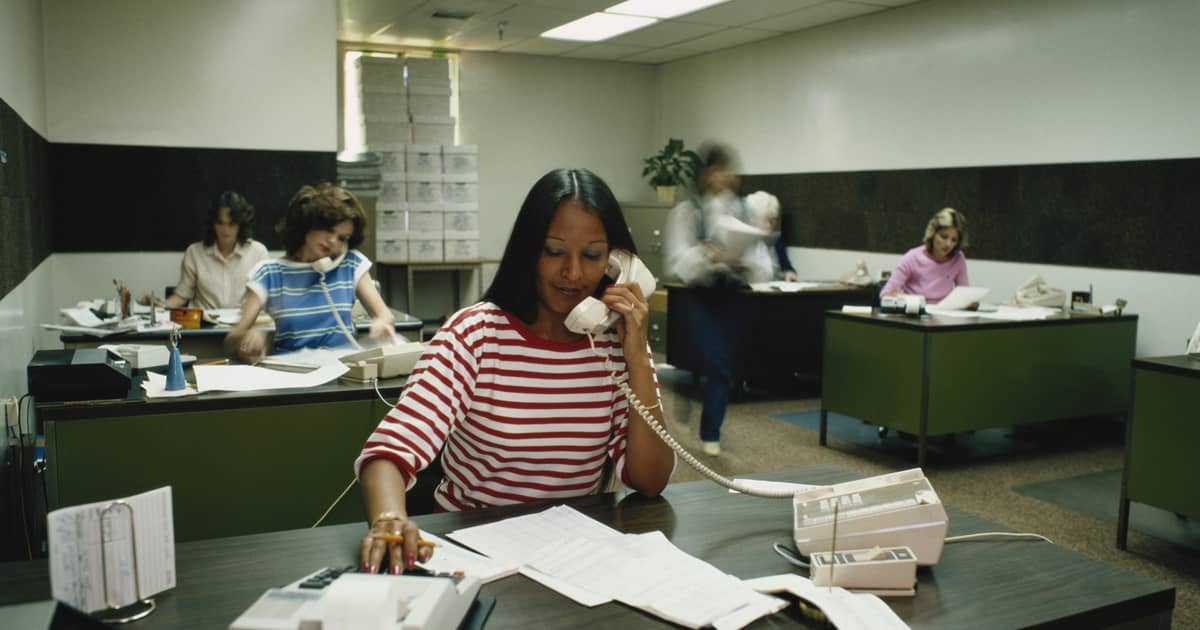A Look At The Progression of Office Design Since its Birth to Present Time – PART 2

In the first part of the article, we looked at office designs from their origin during Roman times until 1970s. Now, we’ll continue to look at the evolution of office design from the 1990s to the current day and look at the prospect of future workplace.
The 1980s
Office layout and Culture
Companies in the 1980s started to focus on aesthetic details that were futuristic and with some industrial touch. As a result, office designs used more clean lines and materials such as metal and glass. In addition, companies were paying more attention to space and how to use it effectively in creating their office layout–for example, constructing cubicle workstations in a linear fashion to capitalise on space and designed to increase productivity. However, this particular design, in reality, created an atmosphere of isolation, where in many cases, workers felt trapped, and the desired goal was not always achieved.
Furniture and Technology
The 1980s saw the increased involvement of technology in offices with significant introductions like personal computers and emails. Other new technological tools that emerged in this decade were CDs, car phones, and pagers.
Ergonomics office furniture continued to become the focus in the 80s, but with further improvements, mainly with the features like chairs with lumbar supports.
The 1990s
Office layout and Culture
During the 90s open space plans and hot-desking became more popular. This was mainly fueled by the fact that more people started to use laptops, which means employees were able to work away from their desks and not be glued to one computer. Moreover, this open space plan helped push workers to be more collaborative, and it was around this moment that the idea of ‘company culture’ was born.
Furniture and Technology
More personalised features were added to each employees’ workstation, such as built-in filing cabinets, personal storage, and lockers. In the early 90s, workstations were U-shaped but later changed to more flexible or non-assigned tables.
The internet emerged in the 90s and helped kickstart the digital world. Together with the internet, mobile phones and personal digital assistants enhanced internal and external communications.
The 2000s
Office Layout and Culture
Startups and the idea of work-life balance have their significant start in the 2000s. This was triggered with advancements in internet connections and services such as 3G, WiFi, and Google.
Office designs were increasingly becoming more informal and fun. Working culture became more open, and with further development in communication, workers were able to work in a more flexible manner. Due to this shift to a more open and informal working culture, office layout in the 2000s included communal areas, interactive rooms, and break rooms for employees to have some quiet time.
Furniture and Technology
The fun aspect of office design and working culture can be seen from the choice of office furniture in this decade. There were more than just the regular office desks and chairs, but there were also sofas, meeting pods, and even some pool tables as part of the office furniture system.
Technology was becoming more tied to the internet. Google, social media, and communication software became an important part of the office culture.
Now and The Future
The COVID-19 pandemic sped up the emergence of a new working culture that made it popular for workers to work from home(WFH). The pandemic also made important changes to the office, mainly health concerns. As a result, more businesses adopted a hybrid and flexible working style and incorporated interior design that focuses on the wellness of the workforce.
Office layout and Culture
Flexible and hybrid offices are becoming the top choice for office designs, and for good reasons. A flexible working style is one effective strategy in embracing the new normal that has become the present and future way of working. Moreover, businesses are already seeing the benefits of adopting a flexible and hybrid workplace environment.
Furniture and Technology
Ergonomic furniture systems continue to be the choice for many as their benefits are abundant. Along with ergonomic furniture, other types of seating are used to accommodate the different preferences of workers.
With its ever-increasing involvement in day-to-day business operations, technology has become one of the main contributors to success for business. You can now see the use of technology in all aspects of business, such as security, data management, and even in supporting workplace hygiene. Cloud technology, communication software, touchless and smart technologies are some of the top tools companies are using.
For more information on technology use, check out our blog on essential technologies to include in your office.
The near future will likely be similar but with further advancement and involvement of technology. Working culture will stay flexible with many companies offering the options to work in the office and at home. Office designs will also still focus on boosting productivity and looking after the well-being of workers.
When designing your workplace, it’s crucial that you incorporate the right office interior design to maximise productivity and involve the right technologies to support your business operations. With this in mind, finding the the best office interior design company for your needs is paramount to creating the best office for you and your team. At SORDC, we execute the entire office renovation process to build a workspace that is well equipped to combat the challenges of now and the future.
